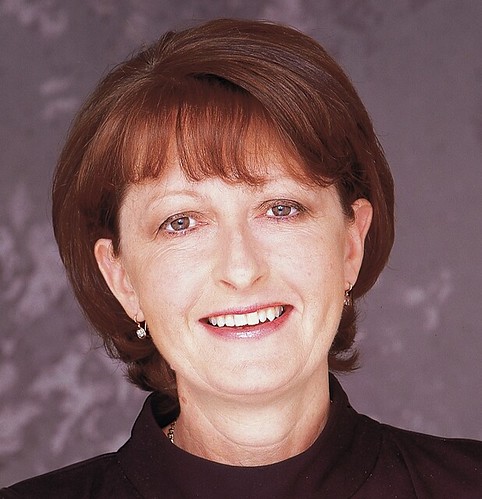Guidelines, schmidelines
In Wednesday’s issue, 6minutes reported on the new whizzbang [American Heart Association guidelines on heart disease in women, in particular the bit about aspirin.
Maybe it’s just me, but the guidelines, which took years to compile and have over ten pages of references, left me with as many questions as answers.
For example, for women at high risk of CVD, the guidelines are clear they should take aspirin, but far less clear about the dose.
“Aspirin therapy (75 to 325mg/day) should be used in high-risk women unless contraindicated.” Well, which dose is it?
Similarly, the advice for low-risk and healthy women had me scratching my head:
“In women greater than or over 65 years of age, consider aspirin therapy (81mg daily or 100mg every other day) if blood pressure is controlled and benefit for ischemic stroke and MI prevention is likely to outweigh risk of gastrointestinal bleeding and hemorrhagic stroke”.
My first admittedly cheeky question is how someone takes 81mg of aspirin given tablets come in 100mg or 300mg doses, so presumably it’s some kind of average.
More seriously, it is precisely the weighing-up bit that busy clinicians need help with.
“Considering” aspirin isn’t going to save a life. In fact, I’m pretty sure that even before the guidelines I might have “considered” aspirin. What I’d like to know, especially from such a well-researched guideline, is how to quickly and easily “weigh” the evidence between bleeding risk and cardiovascular ischaemia.
Even more ambiguously, the evidence on aspirin for healthy or low-risk women <65 years appears twice - once in the “what might work” category and once in the list of “what doesnt work”.
While in one section, it’s advised to consider aspiring in “women <65 years of age when benefit for ischaemic stroke prevention is likely to outweigh adverse effects of therapy”. But in another, “Routine use of aspirin in healthy women <65 years of age is not recommended to prevent MI”.
A call to the University of Tasmania’s Professor Mark Nelson – a man who really has his head around this stuff - cleared things up a little for this younger group. His interpretation of the guidelines is that aspirin is NOT routinely recommended for primary prevention.
But, he told 6minutes, in the absence of other good evidence the authors have left it up to individual clinicians to calculate individual risk for other groups.
I’d thought that calculating individual risk had been the advice for some time, and it sounds a bit back to the future to me.
Or maybe I just need to wait till they publish “Heart Disease for Dummies”.
Maybe it’s just me, but the guidelines, which took years to compile and have over ten pages of references, left me with as many questions as answers.
For example, for women at high risk of CVD, the guidelines are clear they should take aspirin, but far less clear about the dose.
“Aspirin therapy (75 to 325mg/day) should be used in high-risk women unless contraindicated.” Well, which dose is it?
Similarly, the advice for low-risk and healthy women had me scratching my head:
“In women greater than or over 65 years of age, consider aspirin therapy (81mg daily or 100mg every other day) if blood pressure is controlled and benefit for ischemic stroke and MI prevention is likely to outweigh risk of gastrointestinal bleeding and hemorrhagic stroke”.
My first admittedly cheeky question is how someone takes 81mg of aspirin given tablets come in 100mg or 300mg doses, so presumably it’s some kind of average.
More seriously, it is precisely the weighing-up bit that busy clinicians need help with.
“Considering” aspirin isn’t going to save a life. In fact, I’m pretty sure that even before the guidelines I might have “considered” aspirin. What I’d like to know, especially from such a well-researched guideline, is how to quickly and easily “weigh” the evidence between bleeding risk and cardiovascular ischaemia.
Even more ambiguously, the evidence on aspirin for healthy or low-risk women <65 years appears twice - once in the “what might work” category and once in the list of “what doesnt work”.
While in one section, it’s advised to consider aspiring in “women <65 years of age when benefit for ischaemic stroke prevention is likely to outweigh adverse effects of therapy”. But in another, “Routine use of aspirin in healthy women <65 years of age is not recommended to prevent MI”.
A call to the University of Tasmania’s Professor Mark Nelson – a man who really has his head around this stuff - cleared things up a little for this younger group. His interpretation of the guidelines is that aspirin is NOT routinely recommended for primary prevention.
But, he told 6minutes, in the absence of other good evidence the authors have left it up to individual clinicians to calculate individual risk for other groups.
I’d thought that calculating individual risk had been the advice for some time, and it sounds a bit back to the future to me.
Or maybe I just need to wait till they publish “Heart Disease for Dummies”.
Labels: heart guidelines


0 Comments:
Post a Comment
<< Home